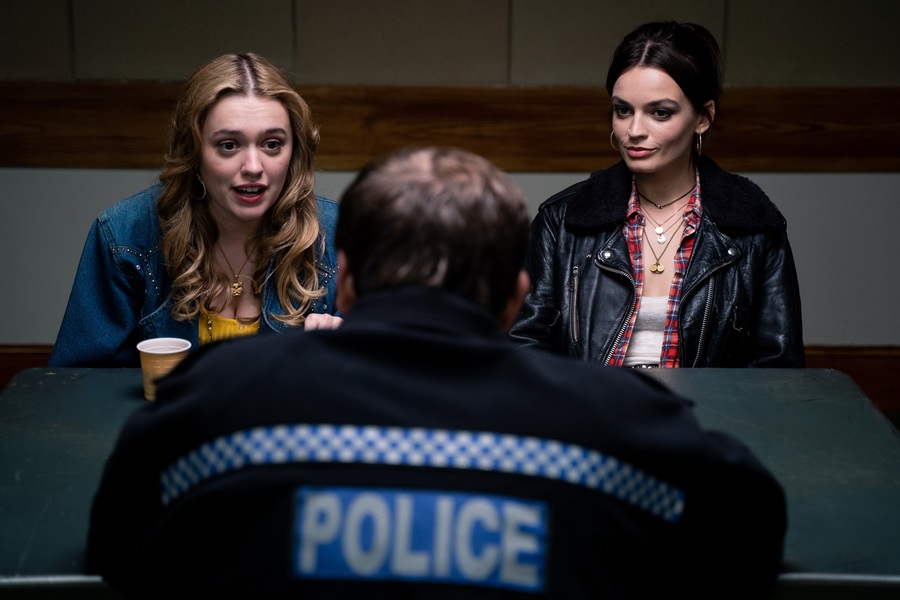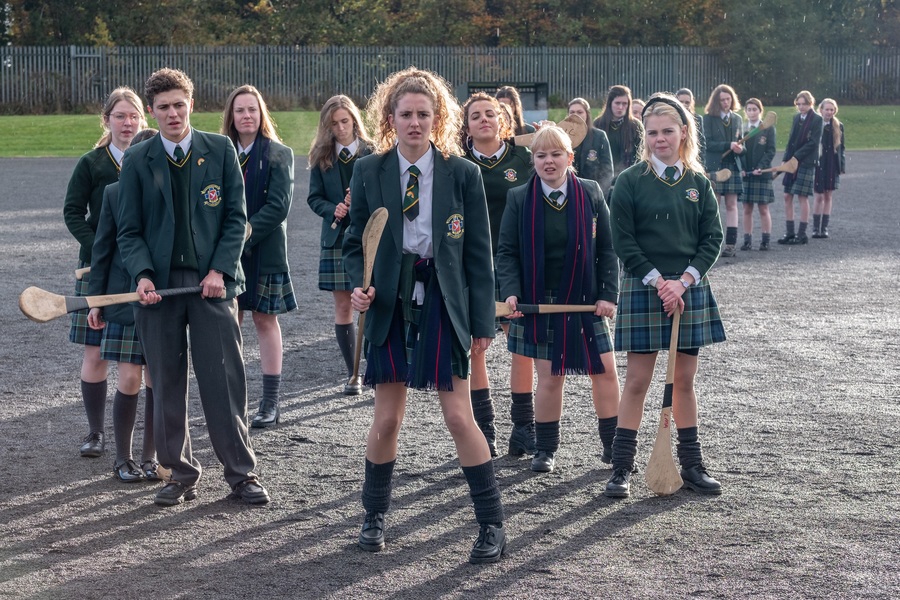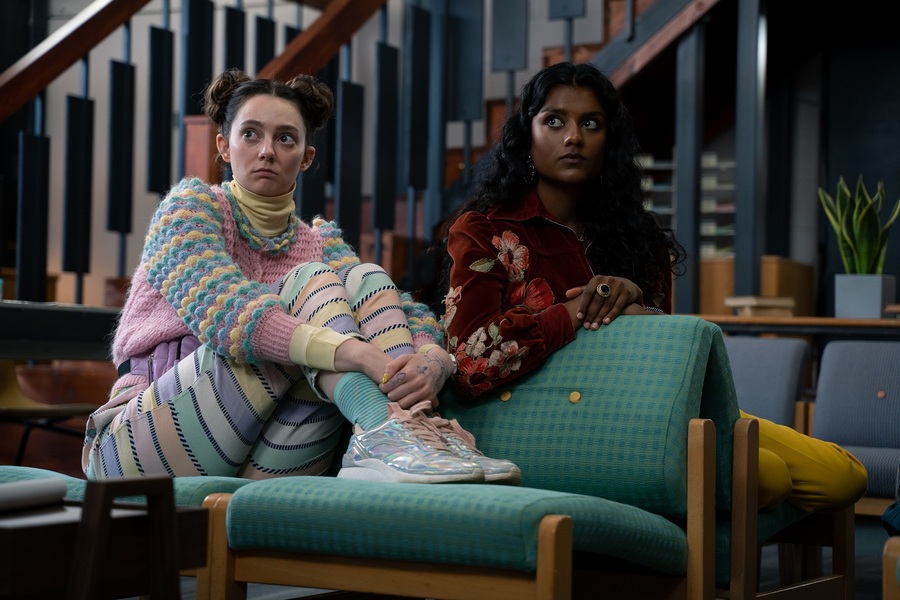Grow Up: The Evolution of Coming-of-Age TV
Season two of Netflix’s Sex Education marks how far coming-of-age television series have come
Sex Education returned to Netflix last month packed with new plots surrounding issues of sexual assault, consent, and pleasure throughout the second season. Revisiting Moorfield Secondary School, the ensemble of British characters face additional afflictions in and out of their bedrooms that remind audiences of the complexities of young adulthood.
Yet Sex Education is not the first series to approach the coming-of-age genre with storylines staged against a high school backdrop, and nor will it be the last. A show developing along similar lines to Sex Education is Channel 4’s Derry Girls. Set in the 1990’s, Derry Girls features four Catholic school girls and a lone teenage Englishman galavanting through the war zones of Northern Ireland all while attempting to find their place in the small town of Derry. Covering typical teenage aspirations of going to prom or making money without having to work while dodging Army patrols and sectarian marches, Derry Girls balances a focus on the historical circumstances of the conflicts in Northern Ireland with its characters’ immense longing for normality.
The strides achieved by Sex Education and Derry Girls – empowered women, layered characters, and inclusive narratives – generates a stark comparison of where the coming-of-age televisual genre used to reside and where it lies today.
***
First aired in 2007, Skins centers around a collection of British teens engrossed in the sex, drug and party scenes of Bristol. Tackling matters of mental health and sexuality, Skins crafts characters that struggle with genuine young adult challenges, and who maintain hedonistic mentalities that cloud the majority of their actions. However, while Skins may mirror Sex Education in its introduction of a complex, multimember cast, the series lacks the depth and intentionality produced by its Netflix successor.
From sexualising women as objects of conquest to glossing over psychological health for humour, Skins presents provocative storylines outside of the cookie-cutter realm of teenage fiction but misses the opportunity to develop its characters with purpose. Beyond their rebellious relatability and troubled aesthetic, the characters in Skins are stunted by sensationalism and the exploration of emotional growth falls flat.
Sex Education, on the other hand, builds on coming-of-age tropes with suggestive yet sensitive plots packed with diversity and realism. Initially introducing characters through apparent stereotypes, Sex Education challenges traditional teenage depictions of jocks, popular cliques, bullies, brainiacs and outsiders by adding layers of intricacy and vulnerability to each of their stories. As the multidimensional cast attempts to achieve or maintain intimate relationships throughout the series, each individual is met with moments of self-reflection and empathy along the way.
Sex Education provokes conversations about internalised homophobia, delayed trauma, asexuality, ableism, abortion and numerous other unconventional topics for young adult television but refuses to do so in a manner where these issues merely amount to comedic plot devices. Sex Education thrives in its empowering and inclusive schemes whereas thirteen years ago, Skins was unable to meet that same mark.
***
Released shortly after Skins, The Inbetweeners follows a ragtag group of four guys joshing and bantering about British suburbia. Chronicling the boys’ failed efforts to buy alcohol and have sex, the awkward quirks of the personalities featured in The Inbetweeners spotlight the show’s reliance on crude and stereotypically ‘boyish’ humour.
While the set-ups of The Inbetweeners and Derry Girls – both Channel 4 sitcoms, both centred around the schoolyard hijinks of a group of teenagers – are superficially similar, The Inbetweeners' plethora of sexist and gay slurs starkly contrast the innocuous yet comedic temperament of Derry Girls. Where women are constructed with agency and individuality in Derry Girls, the women in The Inbetweeners are highlighted solely for their attractive appearance as romantic targets.
Passionate about fasting for Ethiopia, traveling to Paris on a school trip, and exploring steamy curiosities with Protestant boys or a “shaggable” British soldier, the Derry Girls overshadow their hometown horrors with a sense of conscious and comedic disregard for their war-time circumstances. The unity of the main cast of Derry Girls is also unwavering despite their wide-range of personalities and inclusion of British outsider James into their squad.
Passionate about having sex, chasing girls, drinking alcohol, and getting the girls they want to have sex with to drink alcohol, the boys in The Inbetweeners are their own hometown horrors. With the introduction of a new nerd in town, the original troubling trio develops into a quartet of questionable unity as the boys continually chastise one another with degrading and derogatory remarks. The distinctions between The Inbetweeners and Derry Girls are abundant and clearly date the two series in terms of release. Following society’s shift towards more openly discussing matters of sexuality, mental health, and representation since the early 2000’s, media have started to alter their incorporation of these subjects within the production of their televisual texts.
So is 2020 then part of television’s own coming-of-age? As the rise of Netflix and streaming platforms begin to offer a greater variety of televisual content, like Sex Education, with diverse and dynamic teenage representation, where does that leave terrestrial television? Well, Derry Girls proves traditional television is capable of creating empowered and layered protagonists that deconstruct the boundaries of femininity and youth.
When looking back at themes demonstrated by past coming-of-age programs, depictions of young adulthood frame teenagers as solely motivated by sex. While sex and intimacy are certainly significant components of growing up, physical relationships make up a fraction of the complexities faced by young adults, and these are the issues that this new wave of coming-of-age shows are adept at tackling. Not to mention, they prove that comedy surrounding sexual experiences does not have to be at the expense of marginalising minorities.
Moving forward from televisual conventions of objectifying women, designating pleasure solely for heterosexual men, and using difference as an opportunity to offend rather than empathise, Sex Education and Derry Girls mark the beginnings of an evolving coming-of-age genre brimming with inclusivity, sincererity, and humour. Here’s to a new decade of television continuing to grow up.


